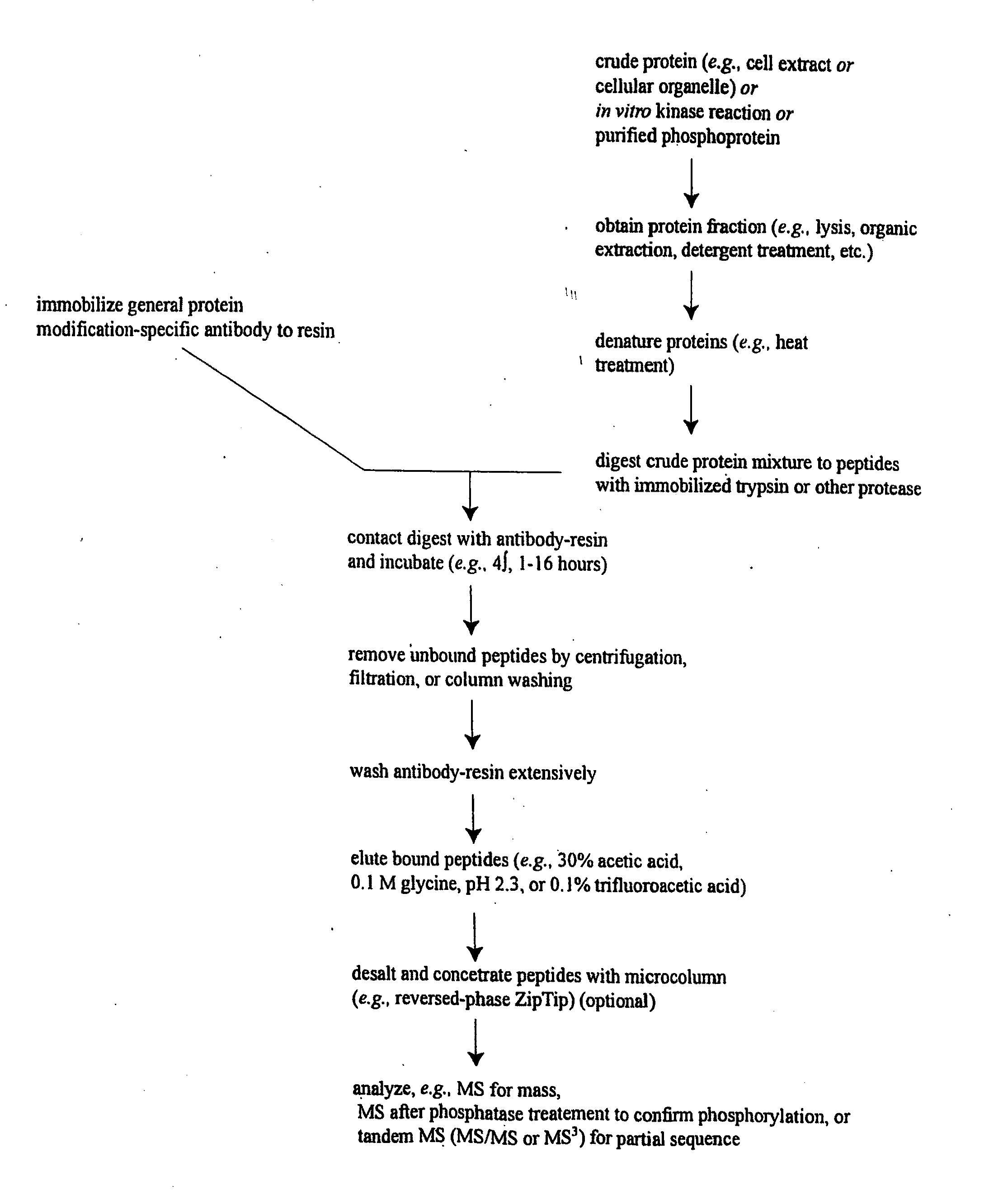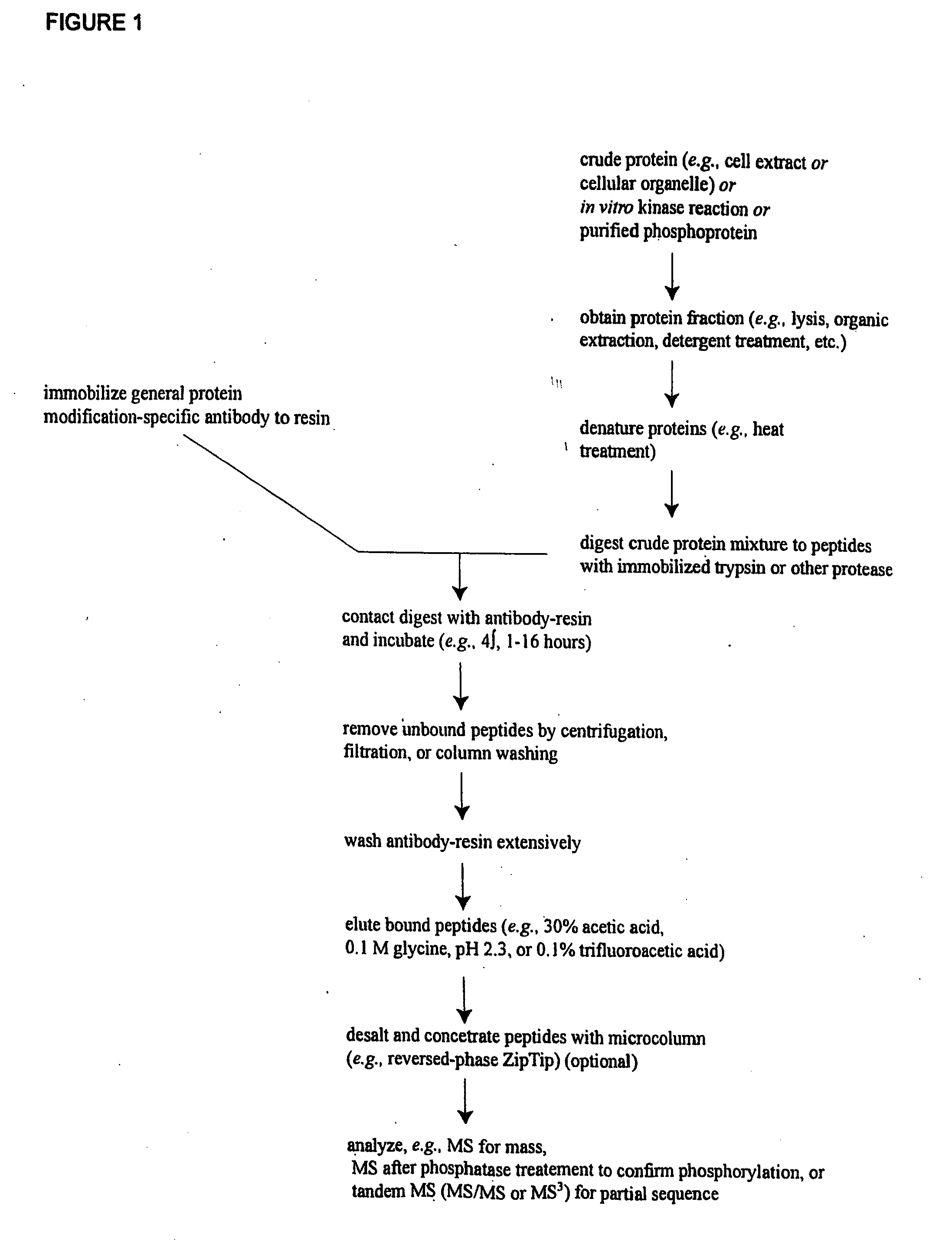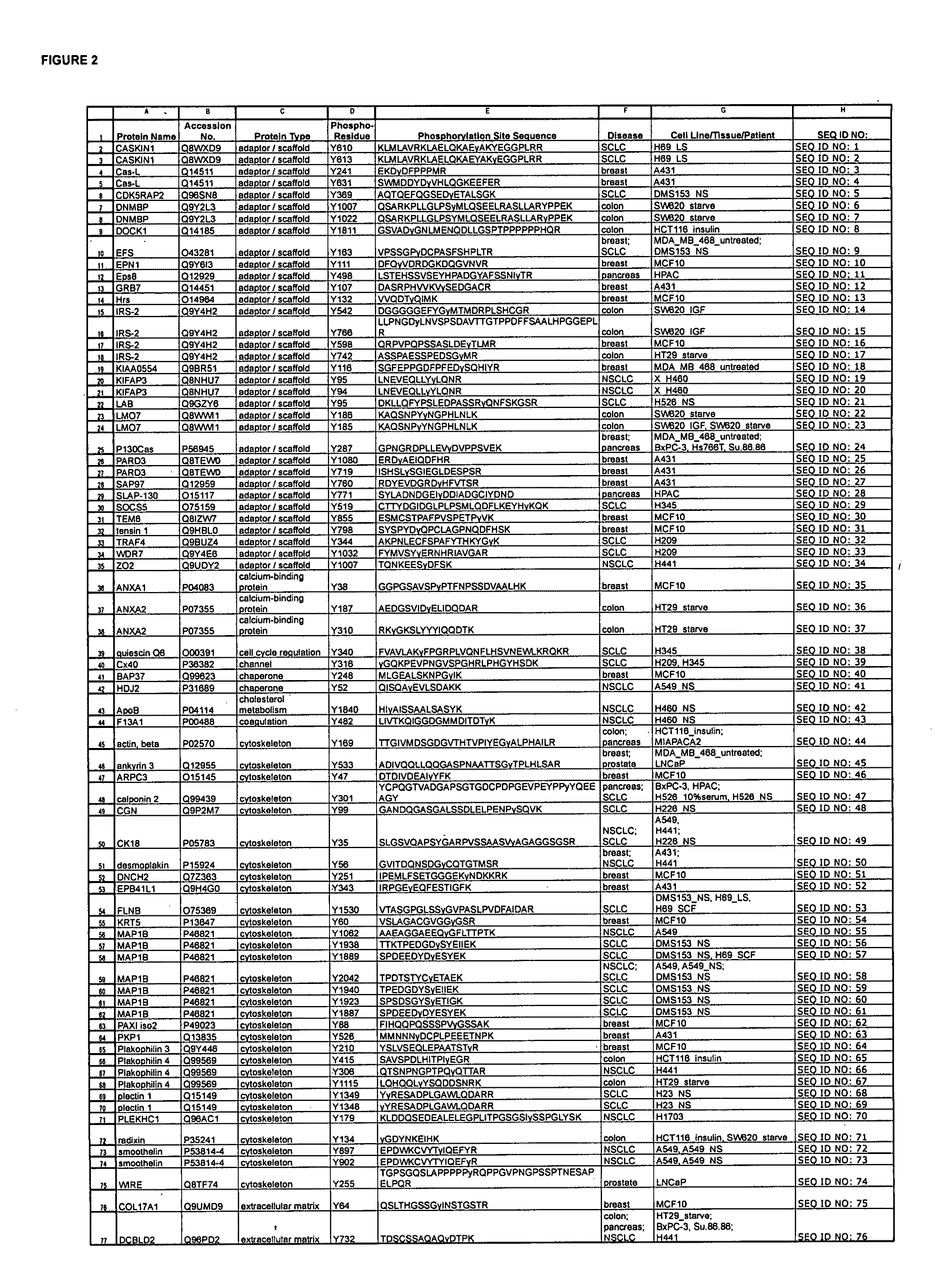Reagents for the Detection of Protein Phosphorylation in Carcinoma Signaling Pathways
a technology of protein phosphorylation and signaling pathway, which is applied in the field of antibodies and peptide reagents for the detection of protein phosphorylation, and to protein phosphorylation in cancer, can solve the problems of relatively scarce information about kinase-driven signaling pathway and phosphorylation site, incomplete and inaccurate understanding of how, and not yet well understood
- Summary
- Abstract
- Description
- Claims
- Application Information
AI Technical Summary
Benefits of technology
Problems solved by technology
Method used
Image
Examples
example 1
Isolation of Phosphotyrosine-Containing Peptides from Extracts of Carcinoma Cell Lines and Identification of Novel Phosphorylation Sites
[0120]In order to discover previously unknown carcinoma-related signal transduction protein phosphorylation sites, IAP isolation techniques were employed to identify phosphotyrosine-containing peptides in cell extracts from the following human carcinoma cell lines and patient cell lines: H69 LS, A431, DMS153 NS, SW620, HT116, MDA_MB—468, MCF10, HPAC, HT29, H460 NS, HCT166, H526, H526, BxPC-3, Hs766T, Su.86.86, H345, H209, H441, H209, A549, MIAPACA2, LNCaP, H226, H69, A431, H460, H23, H1703, Hs766T, DU145, H345, HCT 116, and PANC-1 DU145 (see FIG. 2, Column G). Tryptic phosphotyrosine-containing peptides were purified and analyzed from extracts of each of the cell lines mentioned above, as follows. Cells were cultured in DMEM medium or RPMI 1640 medium supplemented with 10% fetal bovine serum and penicillin / streptomycin. Cells were harvested by low s...
example 2
Production of Phospho-Specific Polyclonal Antibodies for the Detection of Carcinoma-Related Signaling Protein Phosphorylation
[0130]Polyclonal antibodies that specifically bind a carcinoma-related signal transduction protein only when phosphorylated at the respective phosphorylation site disclosed herein (see Table 1 / FIG. 2) are produced according to standard methods by first constructing a synthetic peptide antigen comprising the phosphorylation site sequence and then immunizing an animal to raise antibodies against the antigen, as further described below. Production of exemplary polyclonal antibodies is provided below.
A. HER3 (Tyrosine 1159).
[0131]A 14 amino acid phospho-peptide antigen, EEEDVNGy*VMPDTH (where y*=phosphotyrosine) that corresponds to the sequence encompassing the tyrosine 1159 phosphorylation site in human HER3 kinase (see Row 133 of Table 1; SEQ ID NO: 132), plus cysteine on the C-terminal for coupling, is constructed according to standard synthesis techniques usin...
example 3
Production of Phospho-Specific Monoclonal Antibodies for the Detection of Carcinoma-Related Signaling Protein Phosphorylation
[0138]Monoclonal antibodies that specifically bind a carcinoma-related signal transduction protein only when phosphorylated at the respective phosphorylation site disclosed herein (see Table 1 / FIG. 2) are produced according to standard methods by first constructing a synthetic peptide antigen comprising the phosphorylation site sequence and then immunizing an animal to raise antibodies against the antigen, and harvesting spleen cells from such animals to produce fusion hybridomas, as further described below. Production of exemplary monoclonal antibodies is provided below.
A. Cdc25A (Tyrosine 463).
[0139]An 11 amino acid phospho-peptide antigen, HYPELy*VLKGG (where y*=phosphotyrosine) that corresponds to the sequence encompassing the tyrosine 463 phosphorylation site in human Cdc25A phosphatase (see Row 154 of Table 1 (SEQ ID NO: 153)), plus cysteine on the C-ter...
PUM
| Property | Measurement | Unit |
|---|---|---|
| concentration | aaaaa | aaaaa |
| pH | aaaaa | aaaaa |
| pH | aaaaa | aaaaa |
Abstract
Description
Claims
Application Information
 Login to View More
Login to View More - R&D
- Intellectual Property
- Life Sciences
- Materials
- Tech Scout
- Unparalleled Data Quality
- Higher Quality Content
- 60% Fewer Hallucinations
Browse by: Latest US Patents, China's latest patents, Technical Efficacy Thesaurus, Application Domain, Technology Topic, Popular Technical Reports.
© 2025 PatSnap. All rights reserved.Legal|Privacy policy|Modern Slavery Act Transparency Statement|Sitemap|About US| Contact US: help@patsnap.com



